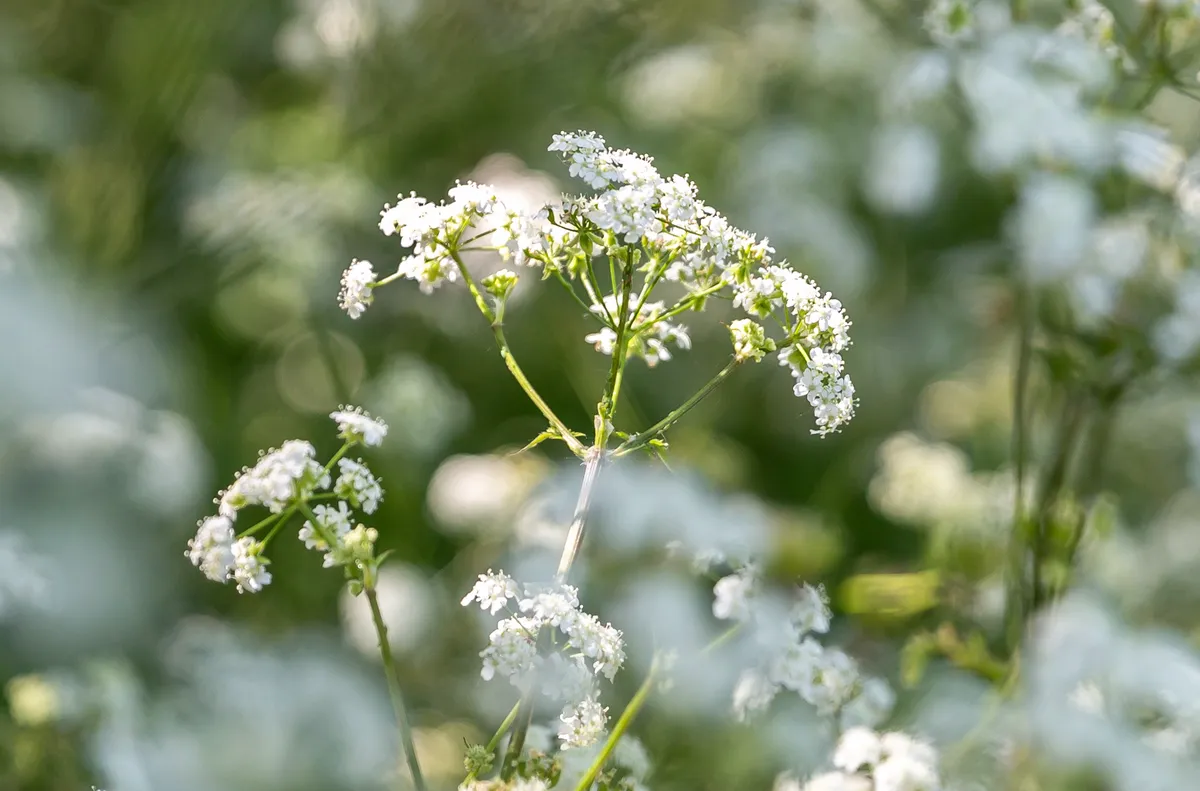May might be most often associated with the rich white cascades of hawthorn blossom, but it is also a month when the verges begin to glow.
Cow parsley (Anthriscus sylvestris) seems to line every rural road, thick enough in places to appear like a blanket of snow.
The froth of cow parsley flowers is a visual highlight of spring.
Learn how to identify cow parsley using its leaves, flowers and smell with our species guide.
- Interested in learning more about Britain's flora? Check out our guides to orchids, bluebells and ferns.

Cow parsley leaves
Cow parsley leaves are green and feathery, almost fern-like in appearance but often inconspicuous as the plant pushes its flowers up through the lush spring growth to the prime, sunniest air.
The stalk is striated, the vertical ridges becoming more distinct as the plant withers and dries.
Umbellifers of Britain
What is an umbellifer? What is the difference between cow parsley and hemlock? Is giant hogweed dangerous? Find out the answers to all these questions and more with our guide to umbellifers.

Cow parsley flowers
The flowers of cow parsley are small and delicate, with five creamy-white petals on short stalks (known as pedicels) that are arranged in groups of up to 10 to form an umbel.
Cow parsley smell
The scent of cow parsley is said to resemble hawthorn blossom, although it carries a slightly earthy, herbaceous edge.

Cow parsley vs hemlock
Any would-be foragers pondering the culinary value of umbellifers need not look beyond hemlock as a potentially deadly example of misidentification. At first glance cow parsley and hemlock may appear similar, but while cow parsley is edible, hemlock is poisonous and, when ingested, can be fatal to humans.
Is cow parsley dangerous?
Cow parsley is edible, but it can be very difficult to identify from its very poisonous relations, such as hemlock and giant hogweed so should only be touched if you're 100% sure of your identification.
Another name for cow parsley
Another similarity to hawthorn is within the shared alternate name, ‘mother die’, the meaning of which was perhaps a deterrent to prevent its picking by uncertain hands. For although cow parsley is edible, and its young leaves sometimes foraged for salads or omelettes, it can be difficult to identify from some very poisonous relations.
Another old name given to cow parsley was ‘Queen Anne’s lace’, so given because when the Queen toured the country following her coronation in late April, the lanes were decorated white as though in her honour. Anne struggled with her health, and it is said that she would walk in the countryside to ease her breathing, while her ladies in waiting made lace in her wake.
There is certainly a lace-like quality to the flowers, and the name itself seems far more fitting than the common name which points to its apparent culinary worth.
